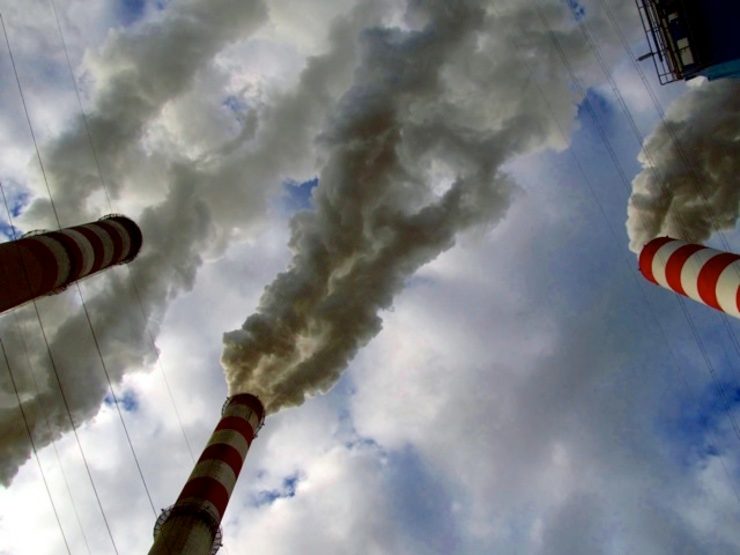SUMMARY
This is AI generated summarization, which may have errors. For context, always refer to the full article.

PARIS, France – Action to tackle greenhouse gases falls way short of what is needed to meet the United Nations’ global-warming target, according to a snapshot of pledges and policies ahead of the climate summit next Tuesday, September 23.
In 2010, the latest year for which a comprehensive assessment is available, global emissions stood at about 50 billion tonnes of carbon dioxide equivalent (GtCO2e).
These must be slashed for a good chance – of about 85% – of pegging warming to two degrees Celsius (3.6 degrees Fahrenheit) over pre-industrial levels, according to a respected policy-monitoring tool, Climate Action Tracker (CAT).
The tally would have to be 42 GtCO2e by 2020, 30 GtCO2e by 2030, 9 GtCO2e by 2050, zero between 2060 and 2080, and probably negative thereafter.
By comparison, if current pledges are carried out in full, emissions in 2030 will be 59 GtCO2e, setting the world on track for 3.1 C warming by 2100.
The outlook is worse if you measure the effect of current policies for actually achieving these pledges.
There would be 65-67 GtCO2 by 2030, leading to warming of 3.7 C by 2100 – a level deemed disastrous by many experts.
Here is how CAT rates the major emitters:
CHINA
- The No. 1 carbon polluter is pledging a big energy efficiency drive but has so far resisted setting an overall cap on its fast-rising emissions.
- It promises to reduce emissions per unit of GDP by 40-45% from 2005 levels by 2020. This would bring the total to 14.3 GtCO2e – pushed beyond levels of about 12 GtCO2e in 2010 by rapid economic growth.
- China’s policies would bring it “close to achieving” its pledge, though the target itself is an “inadequate” contribution to the 2 C target, says CAT.
UNITED STATES
- The world’s No. 2 emitter in 2009 pledged to reduce its greenhouse gases by 17% to 6.2 GtCO2e by 2020 compared with 2005 levels.
- The US is unlikely to reach this “inadequate” target on current policies, according to CAT, even considering a new initiative to cut carbon emissions from power plants by 30% by 2030 from 2005 levels.
EUROPEAN UNION (EU)
- The 28-member bloc aims to reduce average annual emissions from 2013-2020 by 20% from 1990 levels – a pledge it has already all but achieved. This would mean emissions in 2020 of about 4.6 GtCO2e.
- EU emissions have been on a downward trend since 1990, with a brief spike after the 2010 economic recovery.
- Even so, the current pledge is “inadequate,” says CAT.
INDIA
- Fast-growing India, where emissions have been rising steadily since 1990, has pledged to reduce the greenhouse gas intensity of its economy by 20 to 25% by 2020 from 2005 levels – to about 3.5 to 4.0 GtCO2e.
- The target’s ambition is rated “medium,” and remains within reach.
BRAZIL
- One of the first developing giants to set a greenhouse gas target, Brazil aims to reduce emissions by 36.1 to 38.9% in 2020 from what they would have been under a “business-as-usual” scenario (in which no steps are taken to turn the tide). This would come to about 2.0 GtCO2e.
- Brazil is one of few nations likely to meet its target, according to CAT.
INDONESIA
- Indonesia has pledged to reduce emissions by 26% from projected business-as-usual levels by 2020 – or as much as 41% with international support – much of it from halting forest loss.
- But Indonesia is likely to decrease 2020 emissions only by about 11%, to some 2.5 GtCO2e.
RUSSIA
- Moscow aims to reduce emissions by 15-25% by 2020 from 1990 levels – a target rated “inadequate” for being “substantially higher” than business-as-usual projections.
- Estimated 2012 emissions were 1.75 GtCO2e, projected to reach 2.5 GtCO2e in 2020.
JAPAN
- In November 2013, two years after the Fukushima nuclear disaster, Japan revised its pledge downwards – from an initial 25% reduction in 2020 from 1990 levels, to a 3.8% drop from 2005 to 2020.
- The new pledge would result in 1.3 GtCO2 of emissions in 2020 – representing a 3.1% increase over 1990 emissions. Even this target is unlikely to be achieved, says CAT.
CANADA
- With one of the highest per-capita emissions in the world, Canada has pledged a 17% cut, to 612 million tonnes (Mt) of CO2e, in 2020 from 2005, which translates into a 3% rise from 1990.
- The goal is “inadequate” and the country is not on target to meet it, according to CAT. Current levels are 740 MtCO2e.
AUSTRALIA
- Australia has pledged to reduce emissions by 5% by 2020 from 2000 levels, but has since scrapped a key tool, the world’s biggest carbon tax.
- The pledged 2020 emissions level of 569 MtCO2e now looks more likely to be about 595 MtCO2e, says CAT. Emissions in 2010 were 558 MtCO2e.
– Rappler.com
SOURCES: CAT 2013, compiled by Climate Analytics, Ecofys and the Potsdam Institute for Climate Impact Research (PIK); the UN Environment Programme’s Emissions Gap Report
Power plant smoke image from Shutterstock
Add a comment
How does this make you feel?
There are no comments yet. Add your comment to start the conversation.